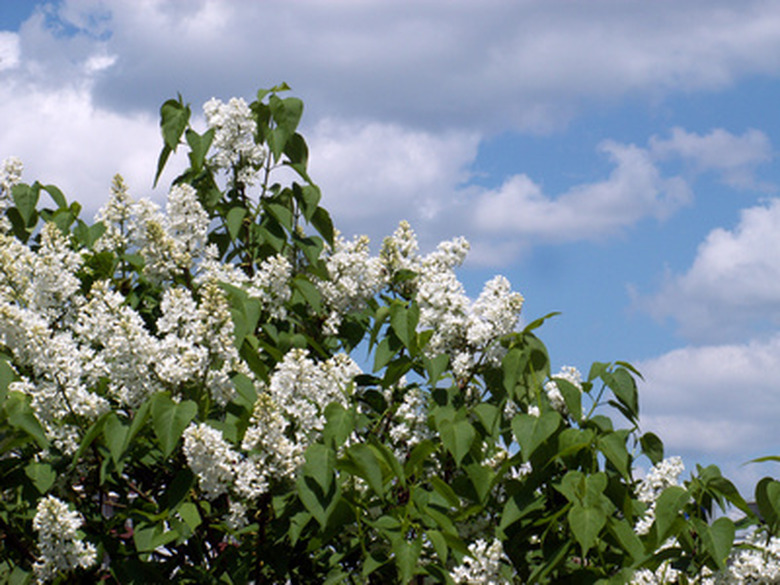The Best Minnesota Privacy Hedges
When planting a privacy hedge in Minnesota, it's important to consider whether the plants are hardy enough to survive the bitter cold winters. Consider how the plants will look without their leaves during the nearly six-month fall/winter season. Although evergreens keep their needles all year long, deciduous shrubs with dense twig growth are nearly as effective as evergreens during the winter months in creating a living privacy fence.
Pyramidal Arborvitae
Growing to a mature height of 40 to 50 feet, pyramidal arborvitae (Thuja occidentalis 'Pyramidalis') makes an excellent privacy hedge and can be maintained at a lower height if pruned regularly. Pyramidal arborvitae has a spread of about 15 feet and will grow to form a solid evergreen hedge if planted 5 to 7 feet apart. Arborvitae grows best in full sun and rich, moist soil. It will tolerate limestone soil well and often is planted near foundations because they are tolerant of the alkaline soil in these locations. Hardy in USDA zones 2 through 7, pyramidal arborvitae is an excellent choice for a hedge anywhere in Minnesota.
- When planting a privacy hedge in Minnesota, it's important to consider whether the plants are hardy enough to survive the bitter cold winters.
- Pyramidal arborvitae has a spread of about 15 feet and will grow to form a solid evergreen hedge if planted 5 to 7 feet apart.
Lilac
With a growth habit that produces a dense bush, the common lilac (Syringa vulgaris) makes an excellent privacy hedge. It is hardy through USDA Zone 2 and is suitable for growing throughout Minnesota. For a hedge with a mature height of 6 to 8 feet, plant lilacs 3 to 6 feet apart. Lilacs prefer well-drained soil and full sun to produce their fragrant spring flowers. Prune them each year in spring after they finish blooming. They flower on wood grown the previous summer. If pruned any later in the season you will cut off the buds for next year's flowers.
- With a growth habit that produces a dense bush, the common lilac (Syringa vulgaris) makes an excellent privacy hedge.
- If pruned any later in the season you will cut off the buds for next year's flowers.
Nanking Cherry
For an edible privacy hedge, plant nanking cherries (Prunus tomentosa) 3 to 4 feet apart. They will grow 6 to 10 feet tall and spread an equal distance, with a dense, twiggy growth habit. Songbirds find irresistible the cherry-like fruits they produce in summer. The fruits are suitable for making jams, jellies, wines and pies. Medicinally, they are used for coughs, bronchial problems and as an antibiotic. Plant nanking cherry in full sun. It tolerates open areas well, handling harsh winds and drought. Nanking cherries are hardy through USDA Zone 2 and will survive winter anywhere in Minnesota, although they generally are short-lived shrubs, with a life span of approximately 20 years.
- For an edible privacy hedge, plant nanking cherries (Prunus tomentosa) 3 to 4 feet apart.
- Nanking cherries are hardy through USDA Zone 2 and will survive winter anywhere in Minnesota, although they generally are short-lived shrubs, with a life span of approximately 20 years.
